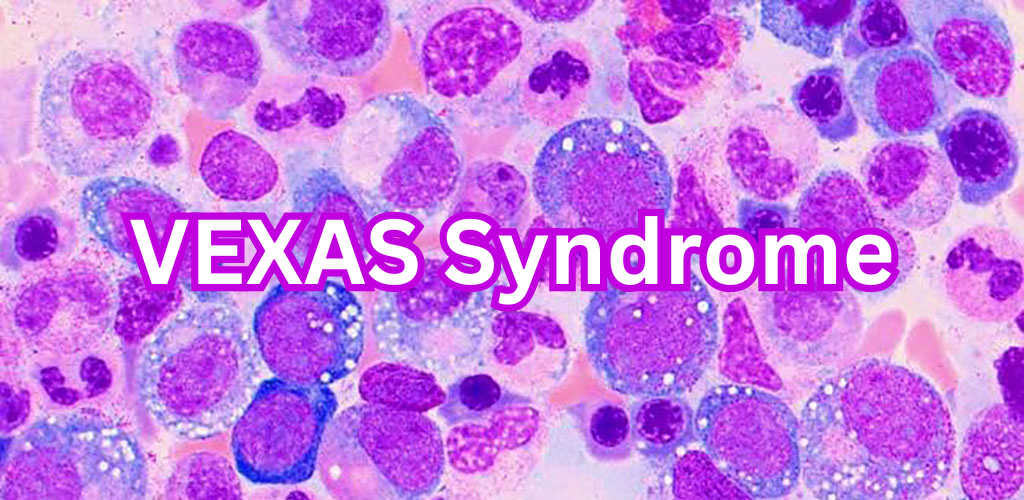VEXAS syndrome, a relatively obscure autoimmune disorder discovered by the National Institutes of Health in 2020, has been making waves in the medical community due to its rarity, severity, and mysterious nature. This blog aims to shed light on this condition, covering its characteristics, causes, symptoms, diagnosis, treatment options, and the current state of research.
Understanding VEXAS
VEXAS stands for Vacuoles in blood cells, E1 enzyme deficiency, X chromosome mutation, Autoinflammatory issues, and Somatic mutations. It predominantly affects males over the age of 50 and is genetic but not inherited, linked to a mutation on the UBA1 gene.
Epidemiology
Recent studies suggest that VEXAS might be more common than initially thought, with approximately 13,200 men and 2,300 women in the U.S. being affected. This prevalence surpasses other inflammatory conditions, such as myeloid dysplasia syndrome and vasculitis.
Genetic Basis
VEXAS is caused by a mutation in the UBA1 gene, found in immune cells and bone marrow cells responsible for blood formation. Researchers have identified the UBA1 gene mutation in myeloid cells, leading to unnecessary activation and subsequent inflammatory symptoms.
Symptoms of VEXAS
The syndrome manifests with a range of symptoms, including fever, fatigue, shortness of breath, joint inflammation, skin inflammation, cartilage involvement in ears and nose, blood vessel inflammation, enlarged lymph nodes, and various blood-related problems such as anaemia or blood clots.
Diagnosis
Diagnosing VEXAS involves a blood test to identify the UBA1 gene mutation. Additional tests like bone marrow biopsy, imaging (e.g., chest CT scans), and lung function tests are conducted to rule out other conditions.
Treatment Options
Currently, there is no standard treatment for VEXAS. Doctors often resort to managing inflammation with steroids and immunosuppressants. While biologic medications have been attempted, corticosteroids remain the most effective. Some cases may involve bone marrow transplants, and ongoing research is exploring alternative treatments such as stem cell therapy, JAK inhibitors, and IL-6 inhibitors.
Prognosis
The outlook for individuals with VEXAS is generally poor, primarily due to the limited understanding of the syndrome. However, as research progresses and more insights are gained, there is hope for improved prognoses and innovative treatment approaches.
Ongoing Research
Researchers are actively investigating various mutations in the UBA1 gene and exploring potential treatments beyond current options. Identifying patients with symptoms but without the gene mutation is also a focus, aiming to improve early detection and intervention strategies.
Conclusion:
VEXAS syndrome remains a medical enigma, presenting challenges in diagnosis and treatment. With ongoing research and collaborative efforts, the scientific community strives to unravel the complexities of this autoimmune condition, offering hope for better outcomes and increased understanding in the future. As more is learned, the potential for breakthroughs in treatment and management of VEXAS syndrome becomes a beacon of progress in the field of autoimmune diseases.
Reference – https://www.webmd.com/men/what-is-vexas




